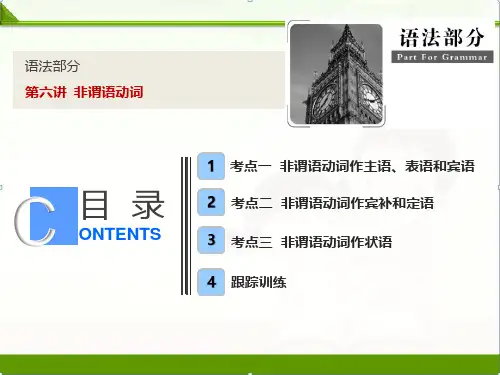4、作定语, 放在被修饰词的后面。
Do you have anything to say?
She is a very nice person to work with.
5. 作状语。 She woke up to find herself in bed. I’m glad to meet you.
在动词find与 help 之后的“to”可省也不可省。
Can you help me (to) clean the windows?
Let her wait for me at the gate.
有些动词如consider, prove, think, know, feel, suppose, discover, imagine, find 等也可跟 “宾语 + to be”的形式,使用中应注意。例如:
The teacher allowed me to finish my homework on Friday.
在make(使), let(让), have(使,叫)等使 役动词后;在see(看), watch (观看), look at(看), observe(观察,看见), perceive (看见), feel(感觉), hear(听), listen to (听...), notice(发现,注意)等表示感官的 动词后及在know(了解), please(请)等后面 省去动词不定式符号“to”。
非谓语动词也叫非限定性动词,即 它的形式不受主语人称和数的限制,不 能作谓语。非谓语动词包括动词不定式、 分词和动名词。
动词不定式
动词不定式的基本构成:
由不定式符号to加动词原形构成。其否定式 由not+不定式构成
动词不定式的句法作用法






